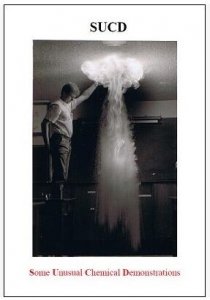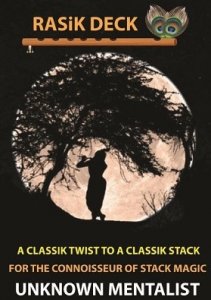SUCD Some Unusual Chemical Demos by Richard Paddon
This ebook describes how to make ten of the most interesting chemical reactions possible. From liquids that change colour as they are mixed, liquids that apparently read minds or have feelings, to spectacular glowing reactions. The explanations and science behind some reactions are also offered.
Contents
-
Safety First
-
Introduction
-
Water – Ink – Wine: Water poured from a jug changes into different coloured liquids (water, ink and wine). These then change colour as they are mixed.
-
The Blue-Bottle Reaction: Each time a sealed bottle of a clear, colourless liquid is shaken, the liquid changes colour to a dark blue. If left to stand, it returns to colourless. This can be repeated a number of times. At no time is anything added to the bottle.
-
The Temperamental Liquid: A sealed bottle containing a yellow liquid is displayed. “This is a temperamental liquid”, states the performer. When shaken, the liquid becomes “angry’ and changes to a red colour. When left to stand, it returns to yellow. This can be repeated many times. Finally, the bottle is shaken one last time. The liquid turns dark green.
-
Oscillating Reaction #1: The colour of a liquid in a glass container oscillates different colours. The colour changes from dark blue, progressively paler, to colourless, to yellow, gold, brown, back to deep blue, and so on repeating the cycle of colours.
-
Oscillating Reaction #2
-
Chickenpox Reaction: After about 20 seconds, the two solutions when combined slowly turn a different colour, by first becoming mottled and then completely changing.
-
Orange? No, Ink! Two solutions are mixed and the audience is asked to concentrate on ink. The liquid changes to orange. “Keep thinking black ink”, says the performer. The liquid flashes to black. This is a similar effect to Think Ink, page 124, Chemical Magic, J. Lippy, but does not require a gimmicked jug.
-
The Double Iodate Reaction #2
-
The Chemiluminescent Clock Reaction #1: A liquid glows red in the dark. Then begins to froth and bubble. The froth glows lilac. This is a very spectacular demonstration.
-
The Chemiluminescent Clock Reaction #2
-
Appendix
1st edition 2007, 17 pages.
word count: 2363 which is equivalent to 9 standard pages of text
PLEASE NOTE: This item is a digital download ,Gimmick not included














